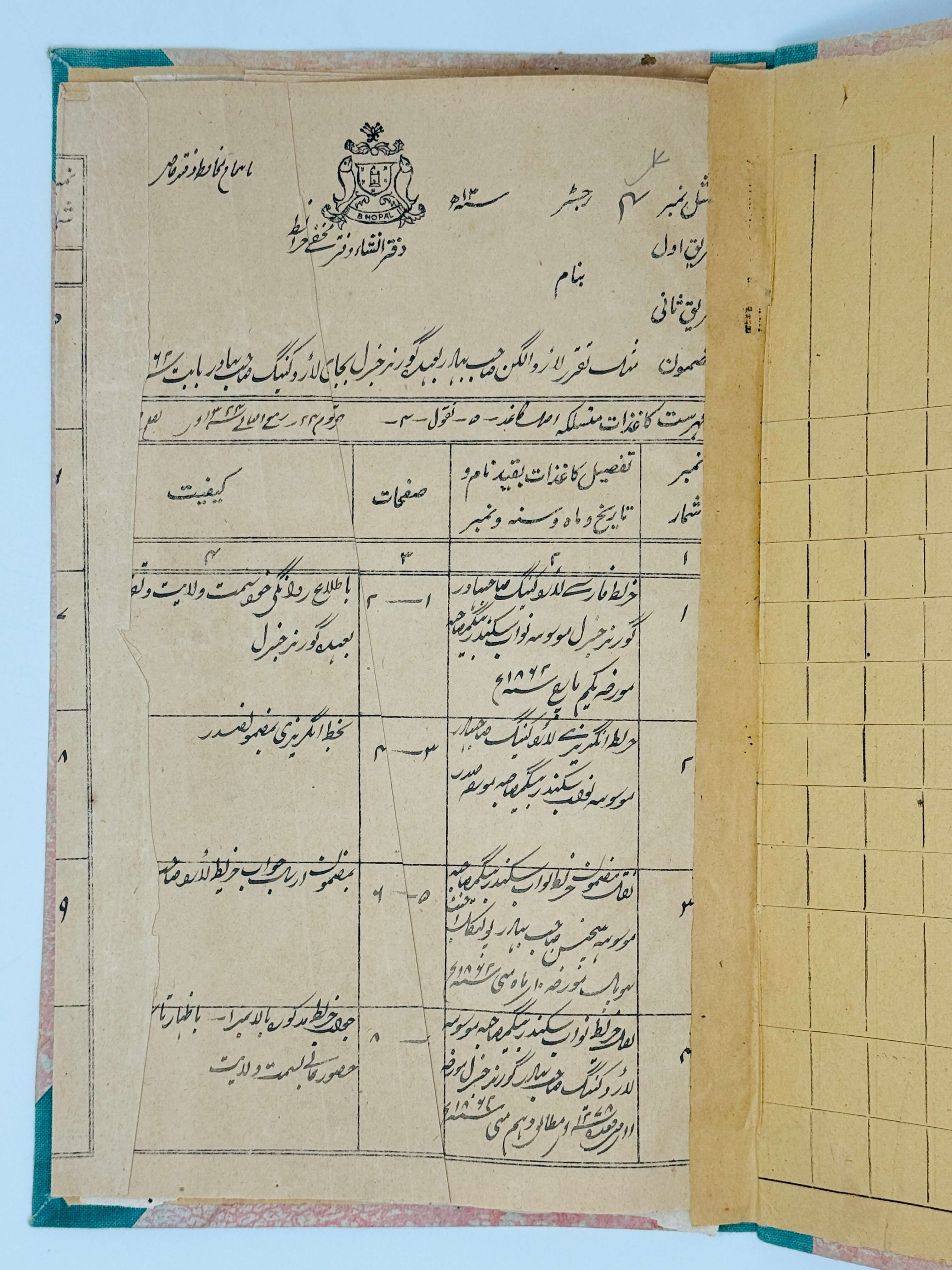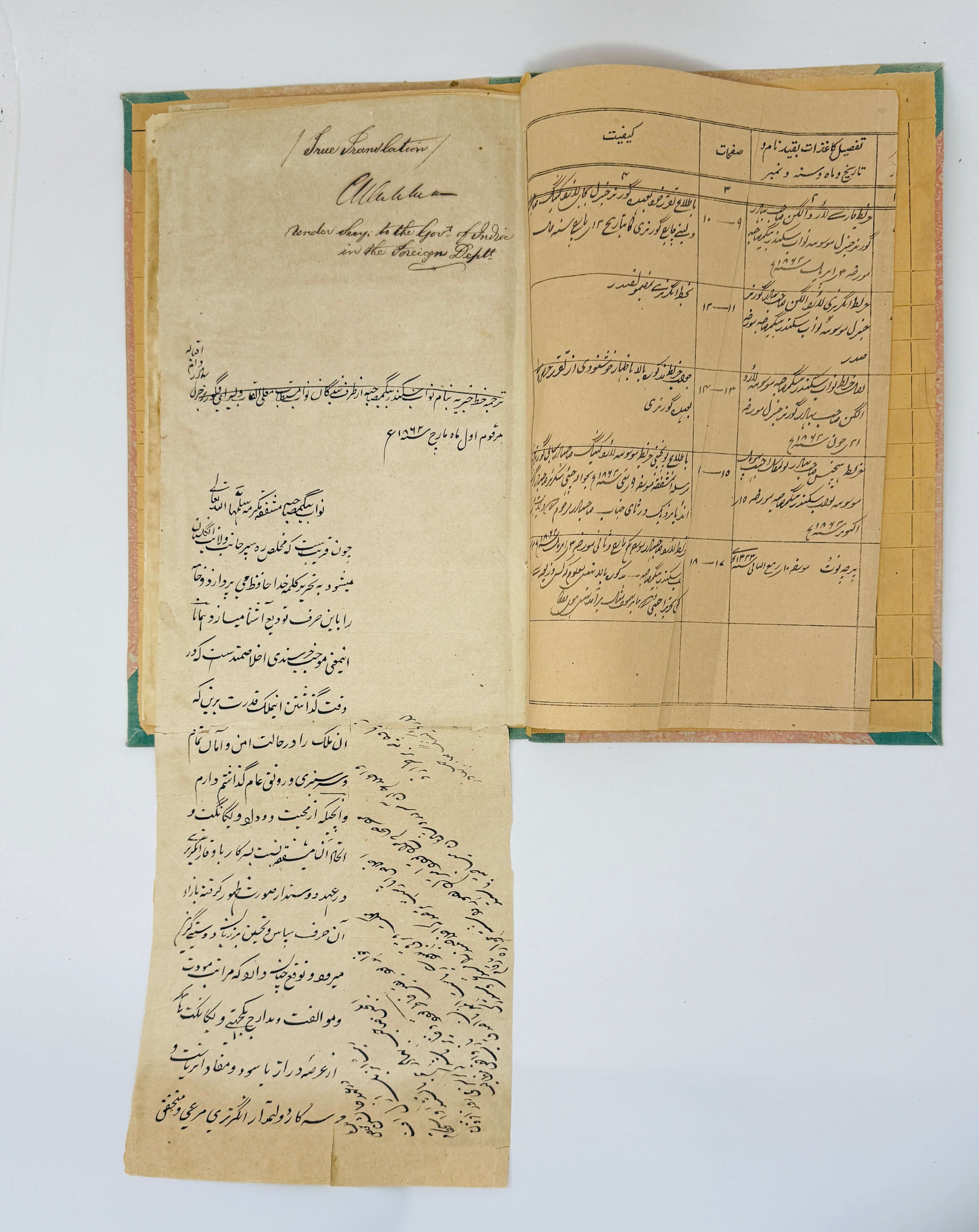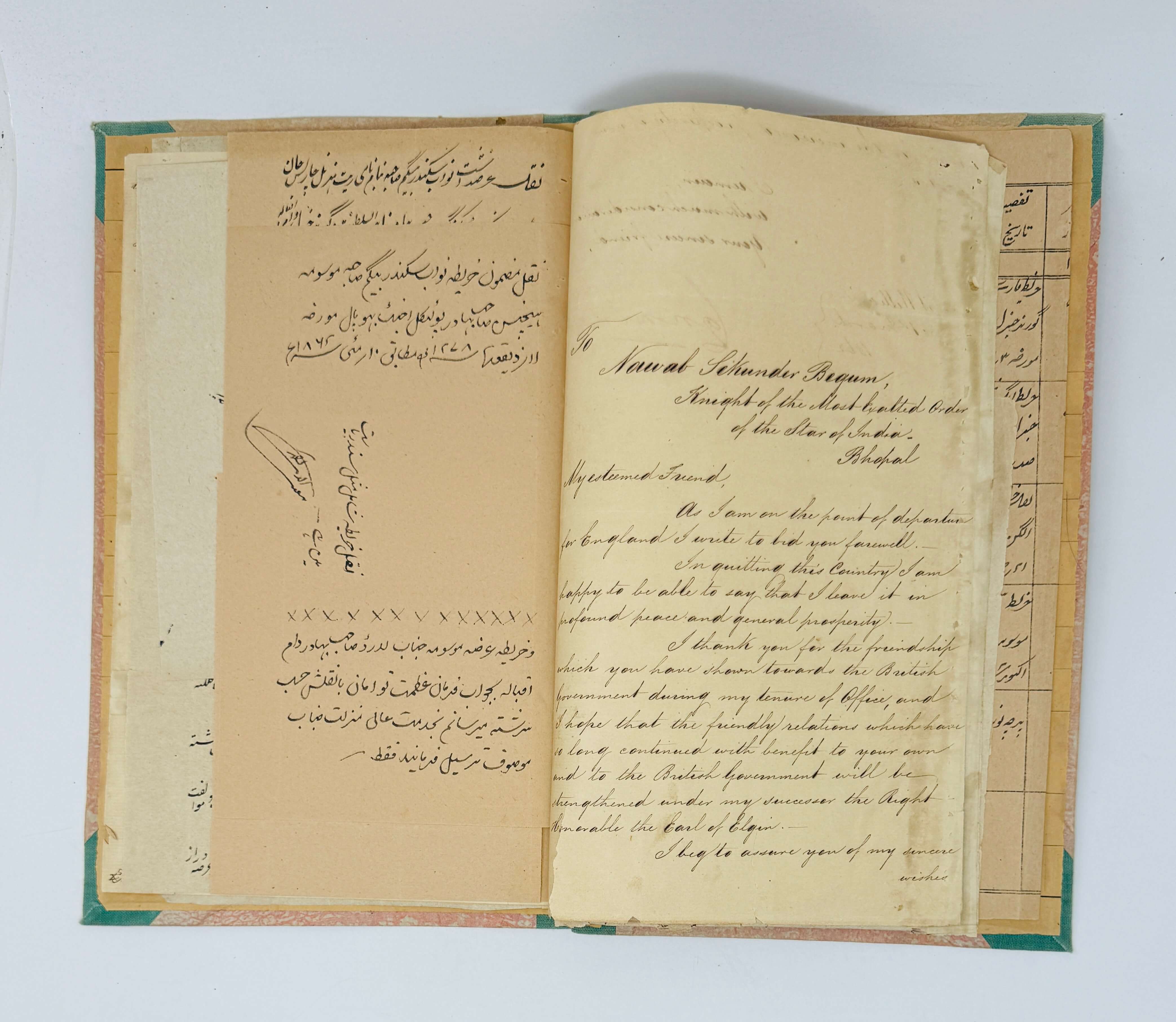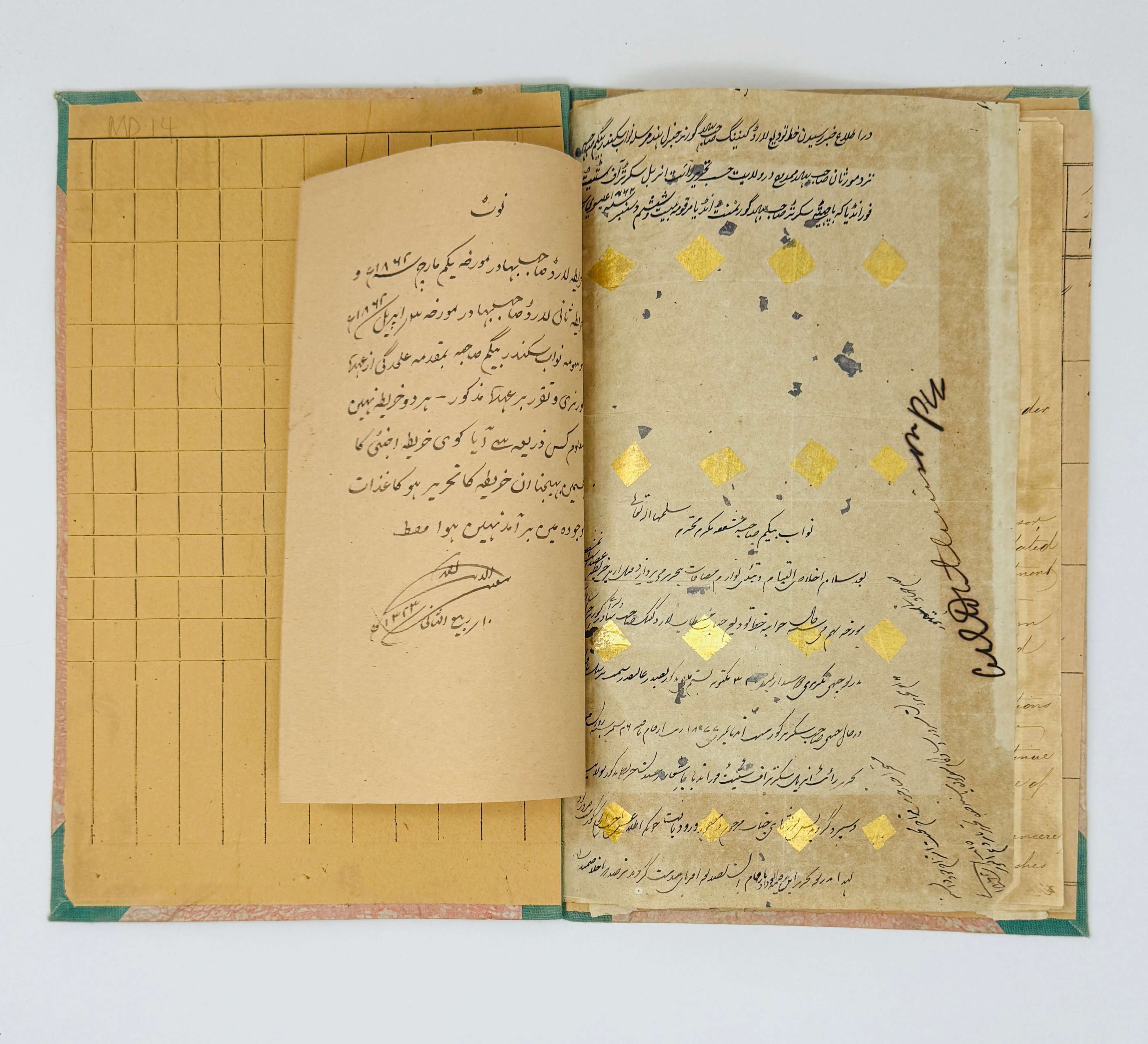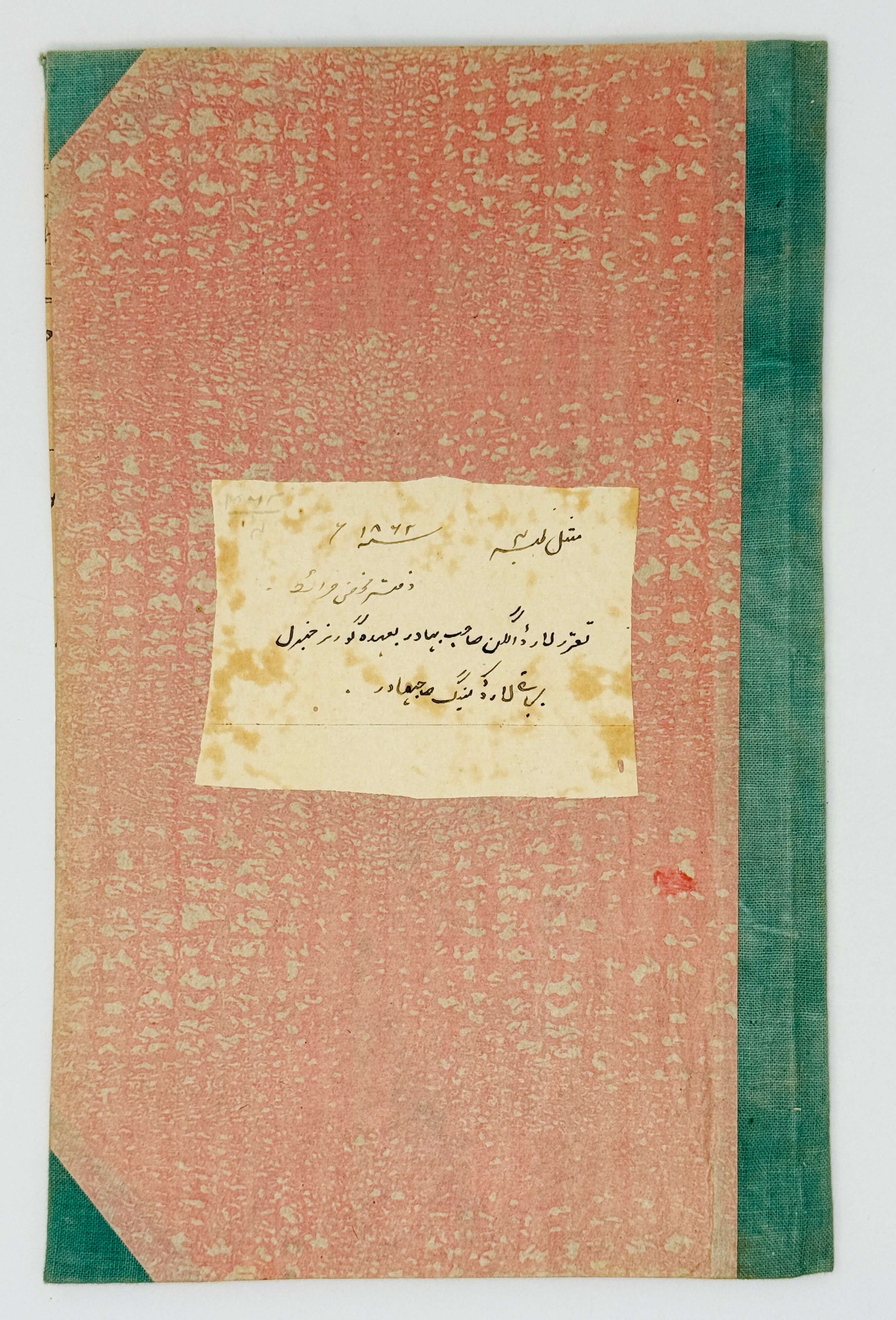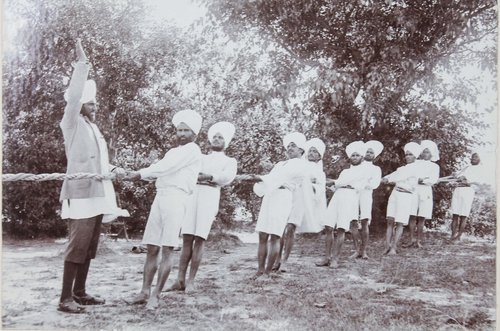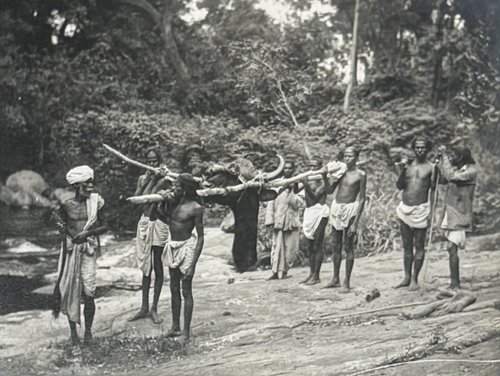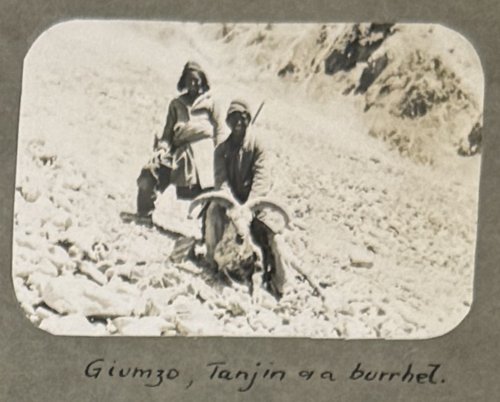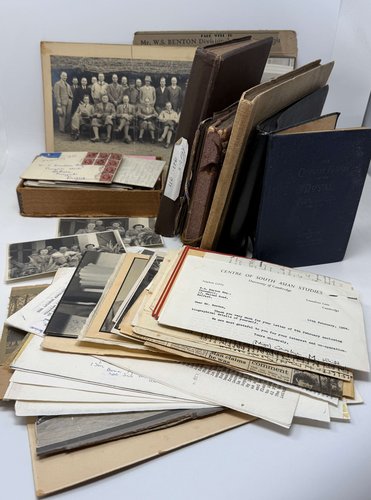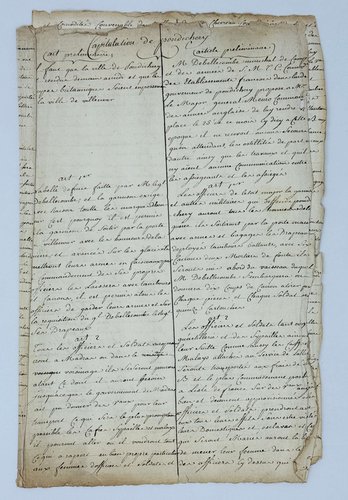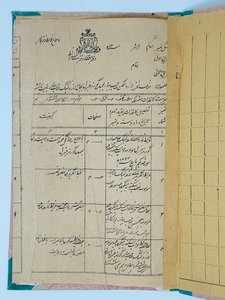
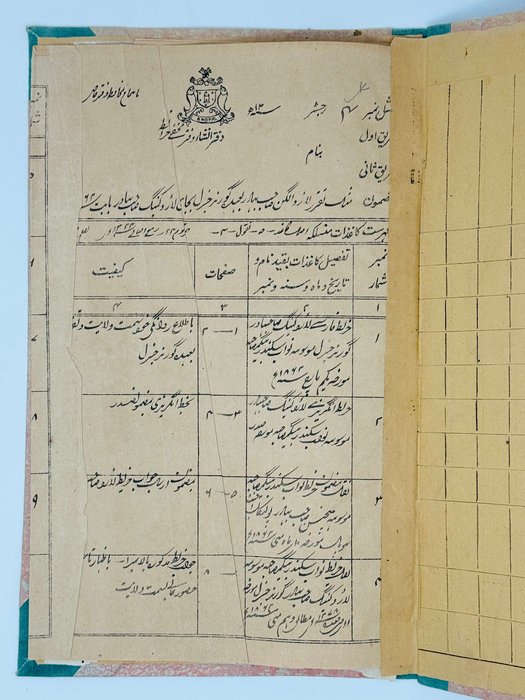
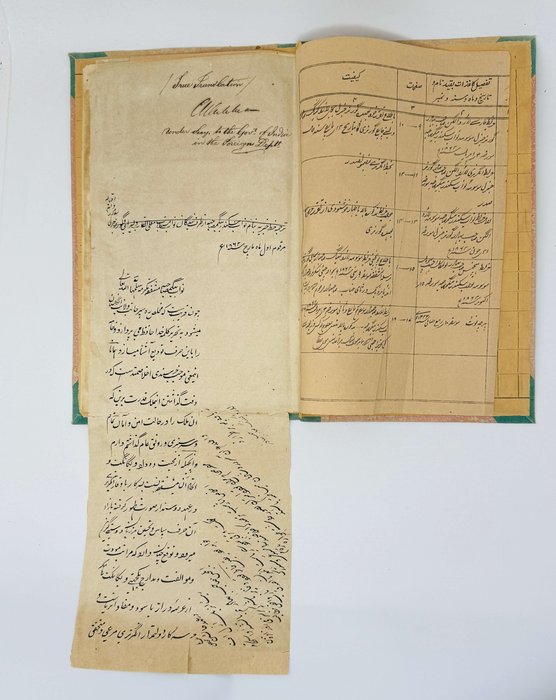
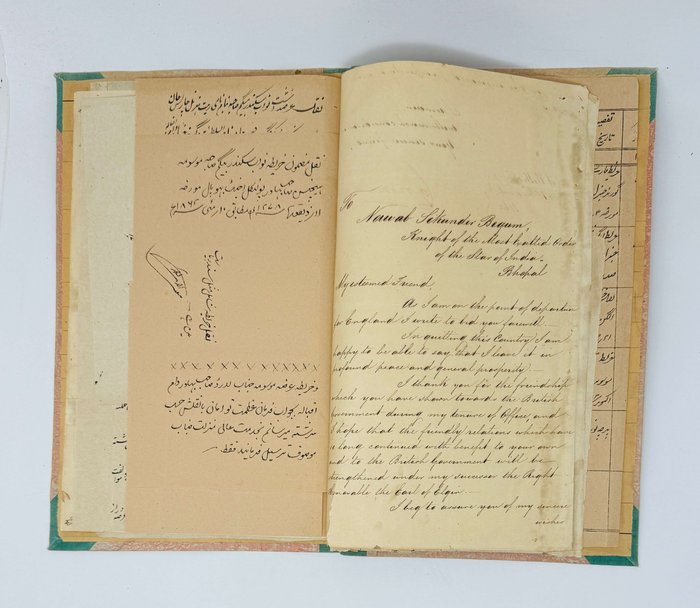
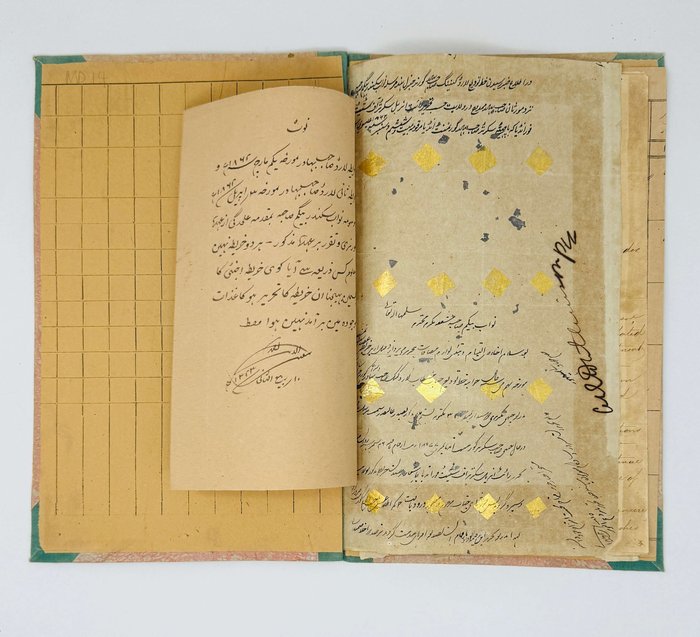
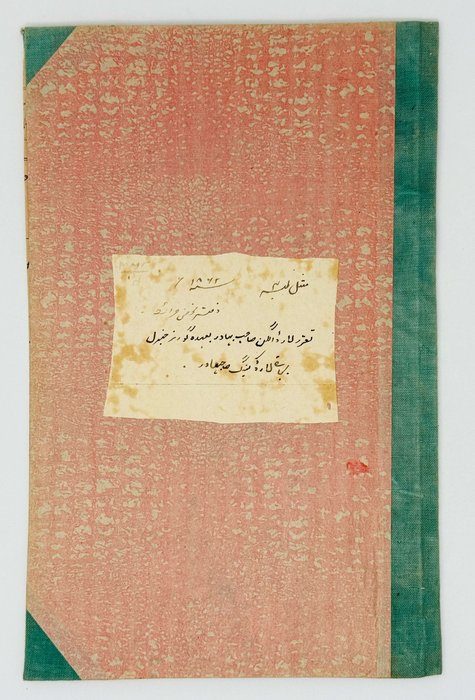
#MD14
Ca. early 1860s
Canning's letter: Fort William [Kolkata], 1 March 1862; Elgin's letter: Fort William [Kolkata], 3 April 1862. Altogether nine manuscripts (four folding) from ca. 19x55,5 cm (7 ½ x 21 ¾ in) to ca. 15x25 cm (6 x 9 ¾ in); with the manuscript contents of the folder, in all ca. 15 pp. of text. Canning's and Elgin’s letters are written in English, the rest of the documents are in Urdu. Brown ink on white and creamy laid and wove paper (some watermarked). One document decorated with gold leaf. Two Urdu manuscripts bear notes by British India officials; three have period manuscript comments in Urdu on the margins. All documents are bound in the original card government folder with a green cloth spine and corners; front board with a paper label and a manuscript title in Urdu. Paper slightly age-toned, occasional staining, fold marks, occasional splits on folds or tears on extremities (some with period repairs with strips of paper); overall a very good collection.
An interesting collection of original official manuscripts illustrating the relations between the British Indian government and the Princely State of Bhopal (now part of the Madhya Pradesh state of India) in the 1860s, when it was governed by its second female ruler, Sikandar Begum. “Although she was initially appointed regent of her nine-year-old daughter Shah Jahan Begum in 1844, she was recognized as Nawab in 1860. During the 1857 Sepoy Mutiny, Sikandar's pro-British stance made her a Knight Grand Commander [of the Most Exalted Order of the Star of India]. In 1863, she was the first Indian ruler to perform the Hajj. Sikandar wrote a memoir of her trip in Urdu, and an English translation was published in 1870. She enacted many reforms in the state, including the creation of a mint, a secretariat, a parliament and a modern judiciary” (Wikipedia). The line of female rulers in Bhopal continued for over a hundred years, from Sikandar Begum’s mother, Qudsia Begum (rule: 1819-1837), to her granddaughter, Begum Kaikhusrau Jahan (rule: 1901-1926).
The folder contains two official letters to Sikandar Begum signed by the Earl of Canning and the Earl of Elgin – the leaving and upcoming Viceroys of India. The Earl of Canning, who ruled India during the 1857 Rebellion and left his office on March 21, 1862, thanks the Begum “for the friendship which you have shown toward the British Government during by tenure of Office” and hopes “that the friendly relations which I have so long continued with benefit to your own and to the British Government will be strengthened under my successor the Right Honorable the Earl of Elgin.” The endured stress seriously impaired his health, and the Earl of Canning died upon return to England on June 17, 1862, at the age of 50.
In his letter, the new Viceroy, the Earl of Elgin, greets Sikandar Begum and informs her that “on the 12th of March I arrived at Calcutta and assumed charge of my Office.” He continues with expressing hope “that the friendly relations which have so long subsisted between your state and the British Government will continue and be strengthened during my tenure of Office. I beg to assure you of my sincere wishes for the prosperity of your country.” A British colonial administrator and diplomat, who participated in the Second Opium War in China and was responsible for the destruction of the Old Summer Palace in Beijing in 1860, the Earl of Elgin served as Viceroy of India for just over a year, dying of a heart attack in November 1863.
Two other documents in the folder are the verified translations of the letters into Urdu (which replaced Persian as the court language in the State of Bhopal in 1862). The other manuscripts have not been translated but apparently relate to the diplomatic relations between the Government of British India and the Princely State of Bhopal in the 1860s.

